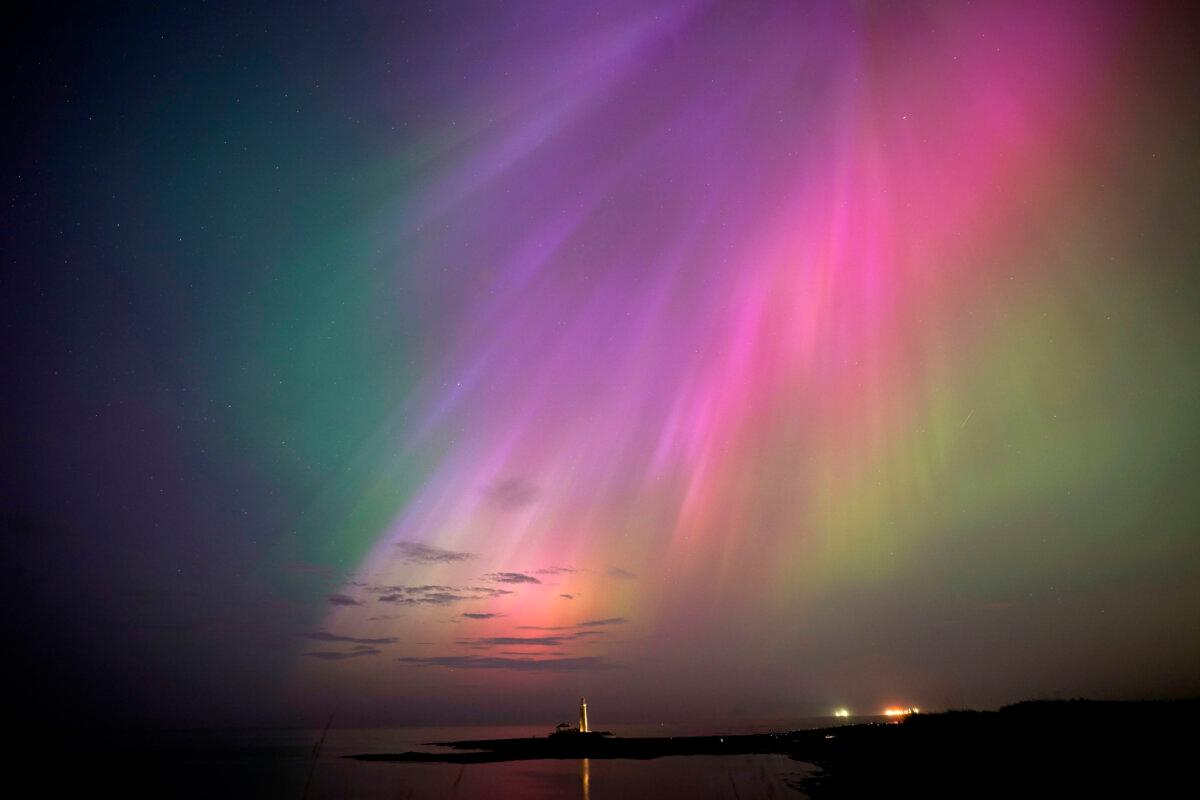CAPE CANAVERAL, Fla.—A powerful solar storm hitting Earth created breathtaking displays of color in the skies across the Northern Hemisphere early Saturday, with no immediate reports of disruptions to power and communications.
The U.S. National Oceanic and Atmospheric Administration (NOAA) issued a rare severe geomagnetic storm warning when a solar outburst reached Earth on Friday afternoon, hours earlier than expected. The Northern Lights, which were prominently visible in Britain, were expected to continue through the weekend and possibly into next week.
Many people in the UK shared photos of the lights on social media early Saturday, with the phenomenon visible as far south as London and southern England.
Chris Snell, a meteorologist at the Met Office, Britain’s weather agency, said there were sightings “from top to tail across the country.” The Met Office also received photos and information from other European locations such as Prague and Barcelona.


NOAA alerted power plant operators, spacecraft in orbit, and the Federal Emergency Management Agency to take precautions.
“For most people on Earth, there is no need to take action,” said Rob Steenburgh, a scientist with NOAA’s Space Weather Prediction Center.
The storm could result in northern lights appearing as far south in the United States as Alabama and Northern California, according to NOAA. However, experts cautioned that it would not be the dramatic curtains of color typically associated with the Northern Lights, but rather splashes of greenish hues.
“The aurora is the gift from space weather,” Mr. Steenburgh said. He and his colleagues suggested that the best views of the aurora might come from phone cameras, which are better at capturing light than the human eye.
Take a picture of the sky, and “you might find a nice little surprise there for you,” said Mike Bettwy, operations chief for the prediction center.
The most intense solar storm in recorded history, in 1859, caused auroras in Central America and possibly even in Hawaii. “We are not expecting that level of activity,” but it could come close, said NOAA space weather forecaster Shawn Dahl.
This storm poses a risk to high-voltage transmission lines for power grids, not the electrical lines typically found in homes, Mr. Dahl told reporters. Satellites could also be affected, potentially disrupting navigation and communication services on Earth.
For example, an extreme geomagnetic storm in 2003 led to power outages in Sweden and damage to power transformers in South Africa.
Even after the storm passes, signals between GPS satellites and ground receivers could be disrupted or lost, according to NOAA. However, since there are numerous navigation satellites, any outages should be brief, Mr. Steenburgh noted.
The sun has been producing strong solar flares since Wednesday, resulting in at least seven plasma outbursts. Each eruption, known as a coronal mass ejection, can contain billions of tons of plasma and magnetic field from the sun’s corona.


The flares appear to be linked to a sunspot that is 16 times the diameter of Earth, according to NOAA. This is part of the solar activity increasing as the sun approaches the peak of its 11-year cycle.
NASA stated that the storm does not pose a serious threat to the seven astronauts on the International Space Station. The main concern is the elevated radiation levels, and the crew could relocate to a more shielded area of the station if necessary, as per Steenburgh.
Increased radiation could also endanger some of NASA’s science satellites. Highly sensitive instruments will be switched off, if needed, to prevent damage, said Antti Pulkkinen, director of the space agency’s heliophysics science division.
Several sun-focused spacecraft are monitoring the situation.
“This is precisely the type of event we want to observe,” Mr. Pulkkinen remarked.
By Marcia Dunn






